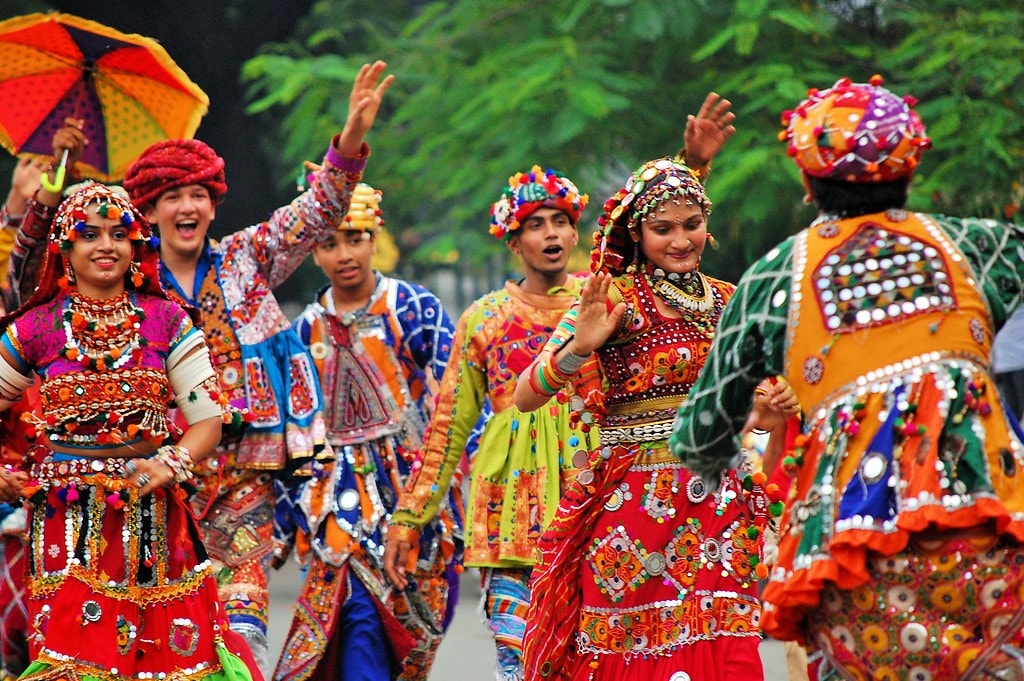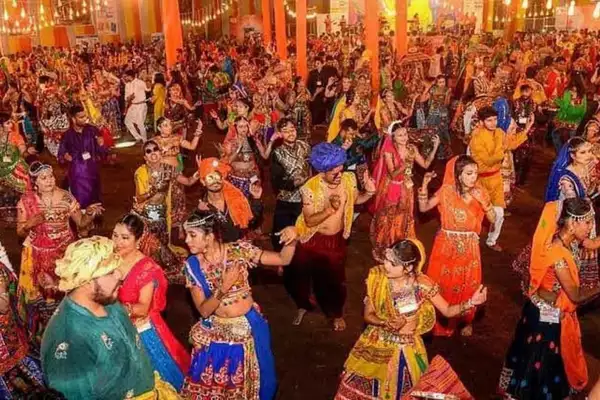Gujarat’s popular folk-dance “Garba” was recently included in UNESCO Intangible Cultural Heritage (ICH) of Humanity.
- This decision was made at the 18th session of UNESCO’s Intergovernmental Committee for Safeguarding of ICH in Botswana.

About Garba:
- Garba is a ritualistic and devotional dance dedicated to the worship of feminine energy or ‘Shakti.’
- It is the longest dance festival performed in the world (9 days of Navaratri).
- It is mainly performed during the Hindu festival of Navaratri or Navratra.
- It fosters equality by transcending socio-economic, gender, and religious structures.
- It includes diverse and marginalized communities, and hence helps strengthening social bonds.
- Garba actually refers to “Garbha deep” – an earthen pot with holes, in which a lamp is lit and women dance around it in circular movements with rhythmic clapping.
- Its practitioners include dancers, musicians, social groups, craftspeople, and religious figures.
- Musicians often includes- dholak, dhol, shehnai, cymbals, harmonium etc.
How Garba is performed?
- The dance takes place around a perforated earthenware pot lit with an oil lamp or an image of the mother goddess Amba.
- The dance begins with slow circular movements to let the tempo slowly build up to a frenzied whirling.
- The dancers wearing colourful dresses, move around the centre in a counter-clockwise circle.
- Simple dance steps including hoping and clapping hands in unison.
About the UNESCO ICH of Humanity:
- It is a practice, representation, expression, knowledge, or skill considered by UNESCO to be part of a place’s cultural heritage.
- It includes intangible heritage consists of nonphysical intellectual wealth, such as folklore, customs, beliefs, traditions, knowledge, and language.
- The UNESCO established its Lists of ICH with the aim of ensuring better protection of important ICH worldwide and the awareness of their significance.
- It is published by the Intergovernmental Committee for the Safeguarding of ICH.
- Its members are elected by State Parties meeting in a General Assembly.
- Using different oral and intangible heritage of humankind worldwide, the programme aims to draw attention to the importance of safeguarding intangible heritage.
- UNESCO has identified this as an essential component and as a repository of cultural diversity and of creative expression.
- It was established in 2008 when the 2003 Convention for the Safeguarding of the Intangible Cultural Heritage took effect.
Other key facts:
- 14 other elements from India are also inscripted to UNESCO’s Representative List of ICH which includes Ramlila, yoga, Kutiyattam, Kalbelia folk songs, Chhau dance, etc.
Ref:Source
| UPSC IAS Preparation Resources | |
| Current Affairs Analysis | Topperspedia |
| GS Shots | Simply Explained |
| Daily Flash Cards | Daily Quiz |


